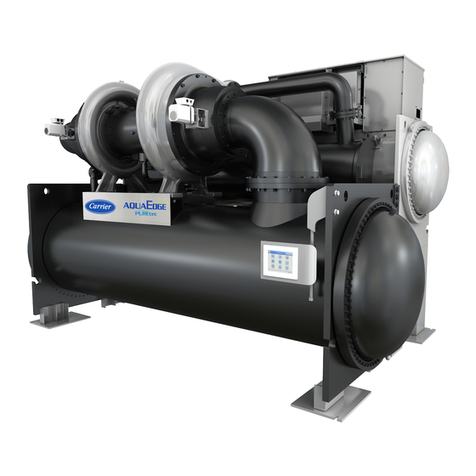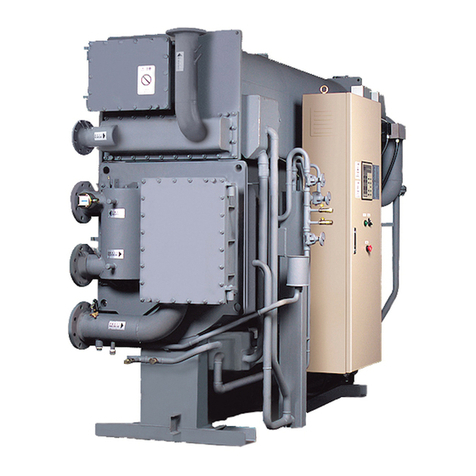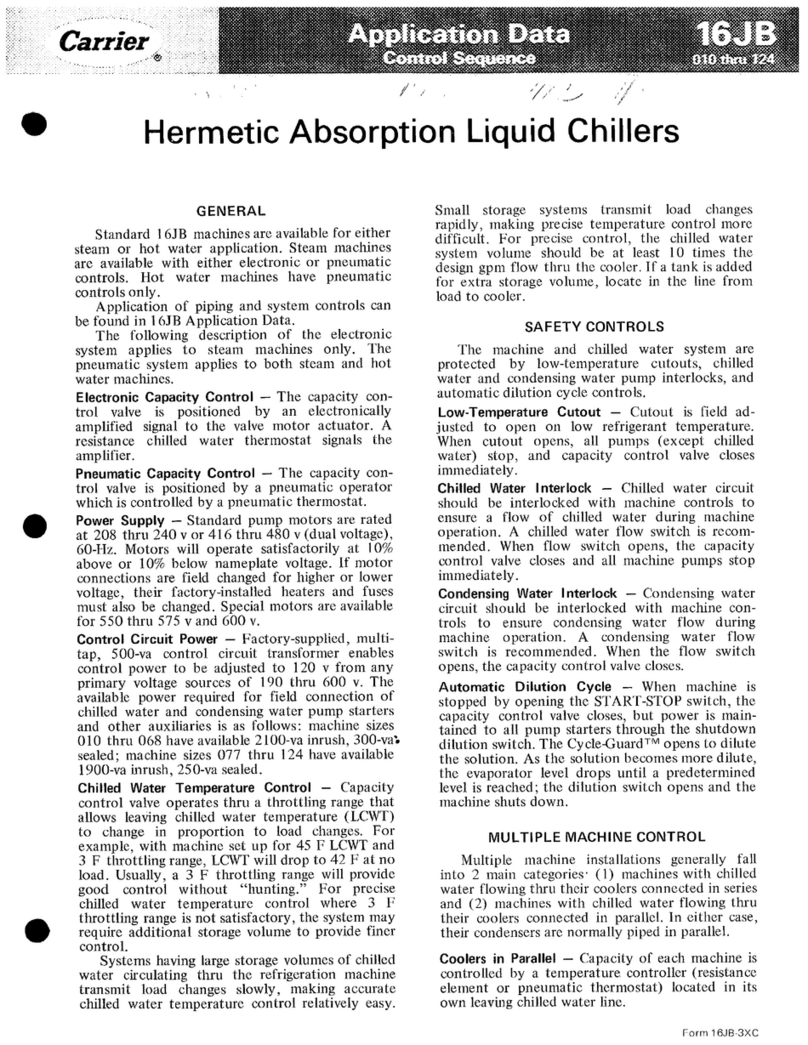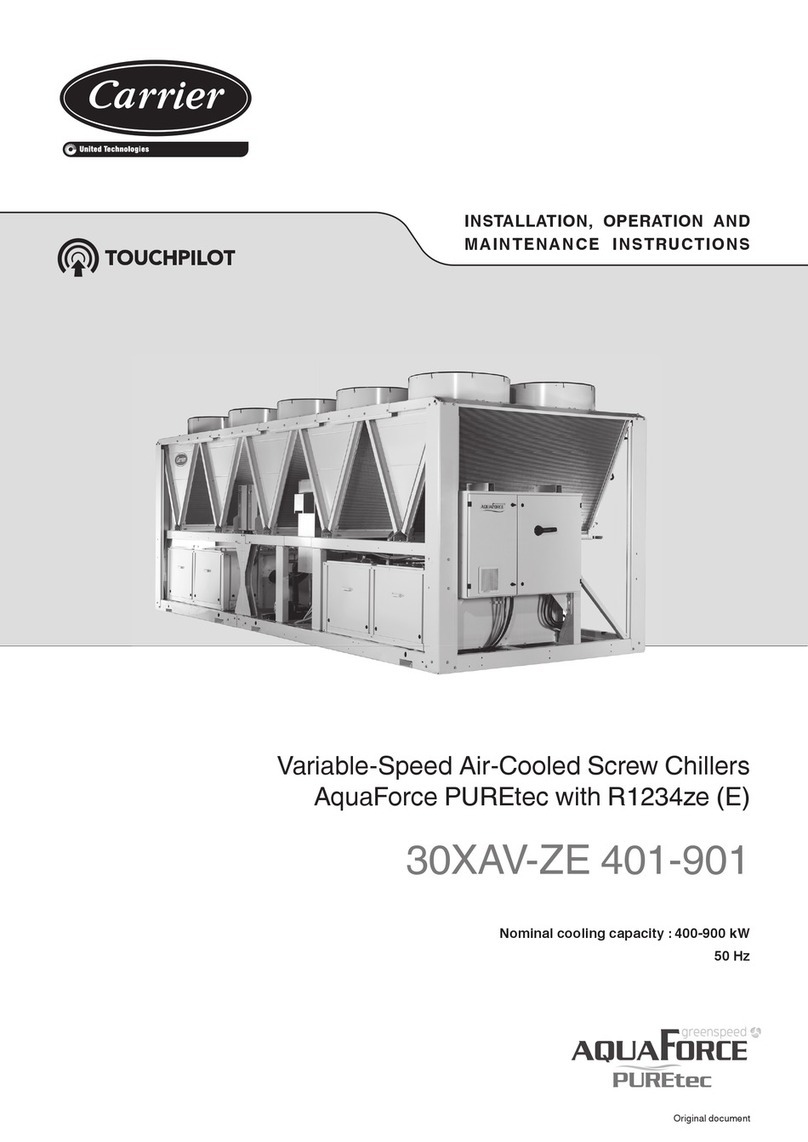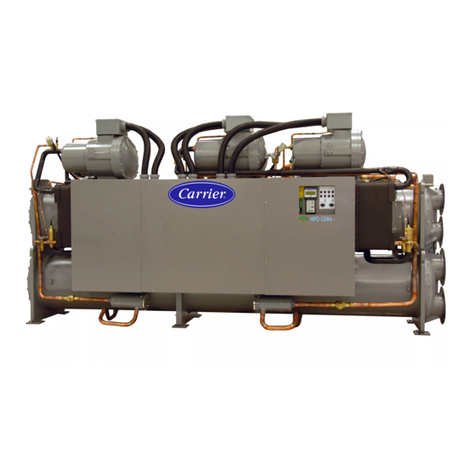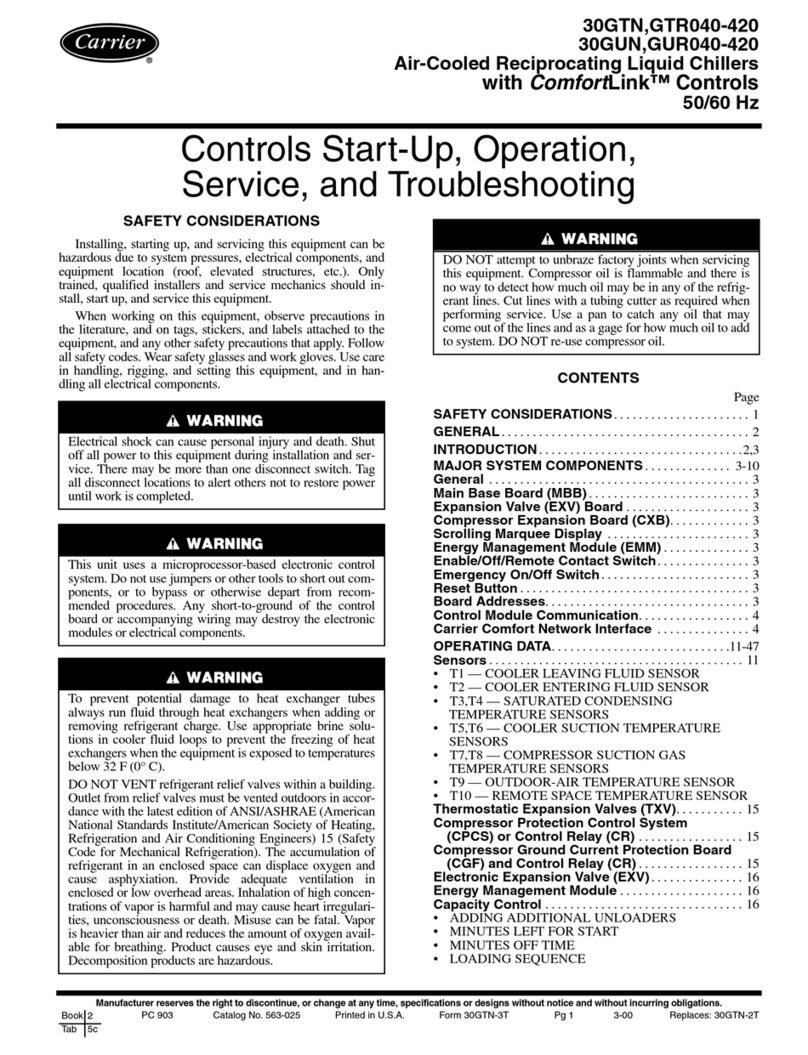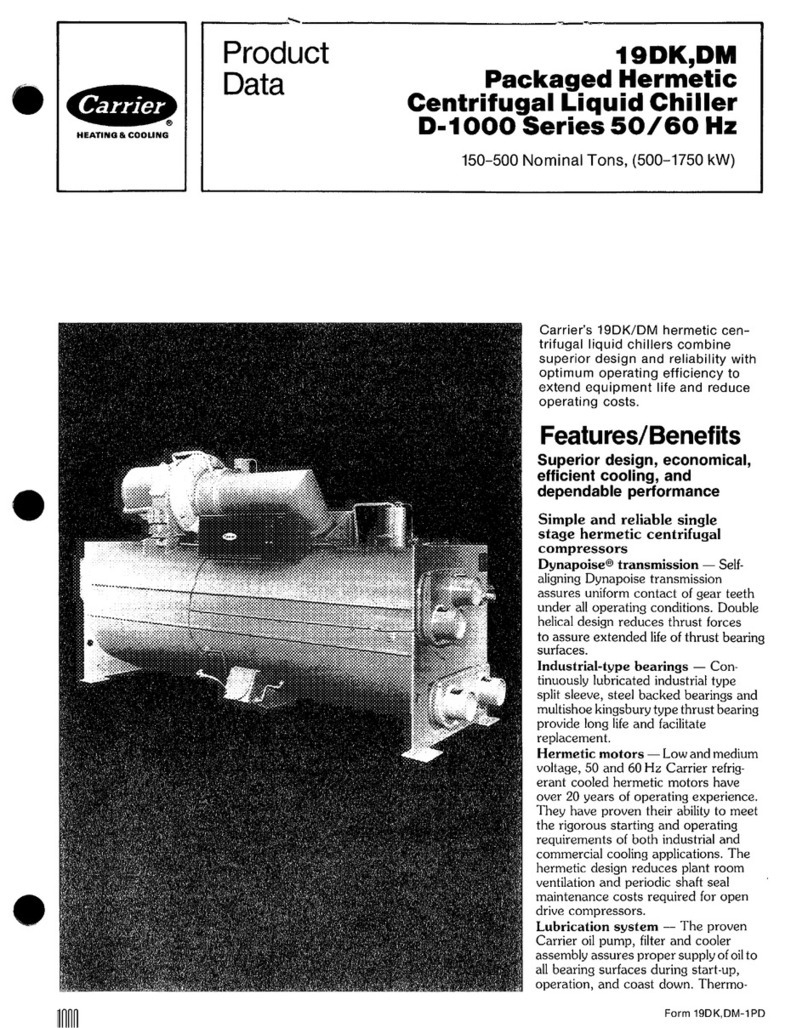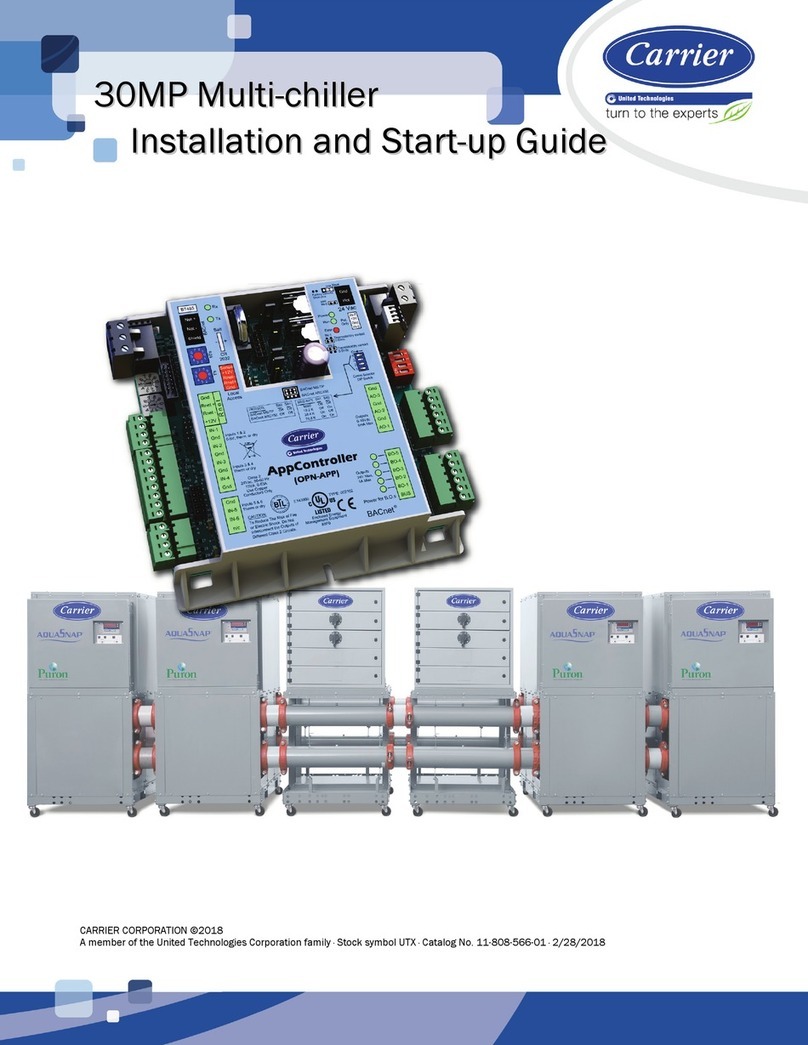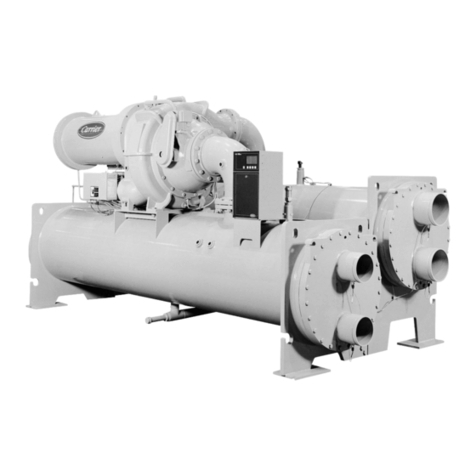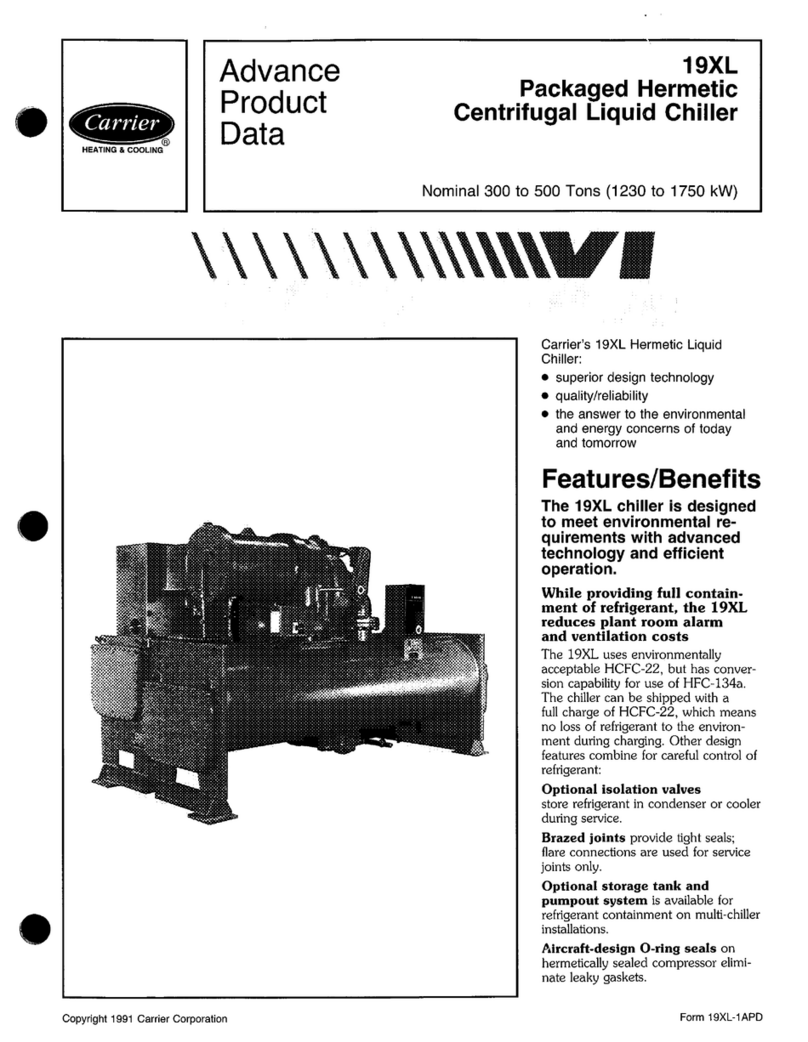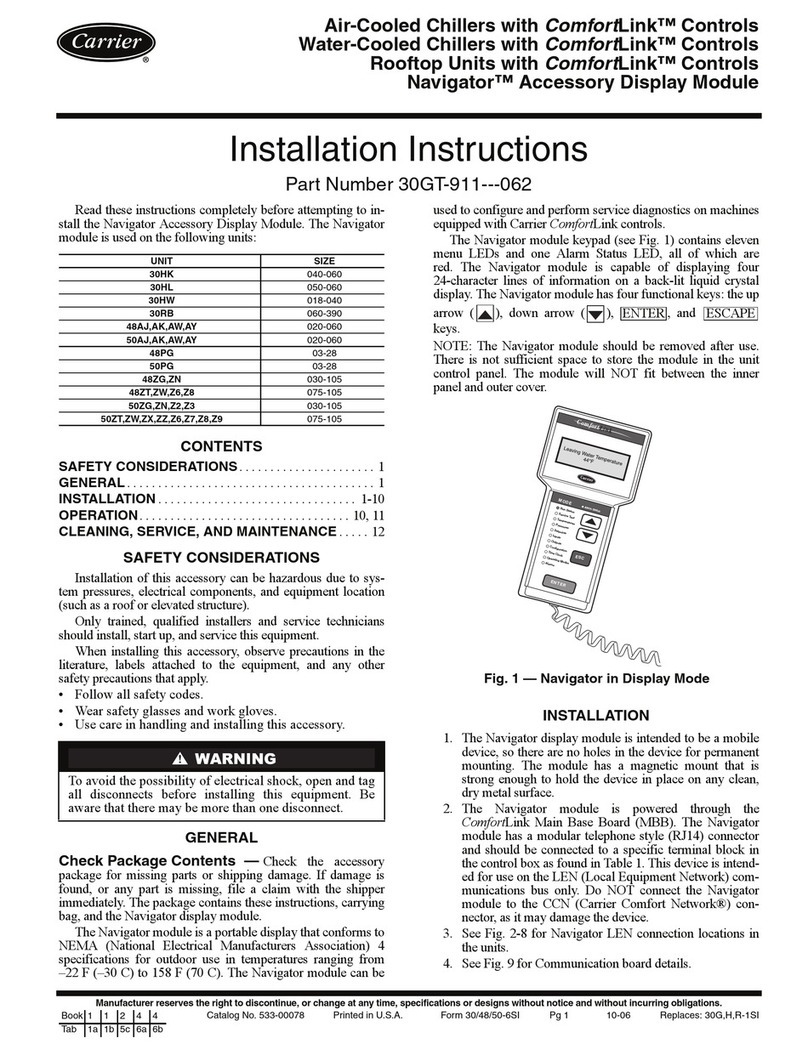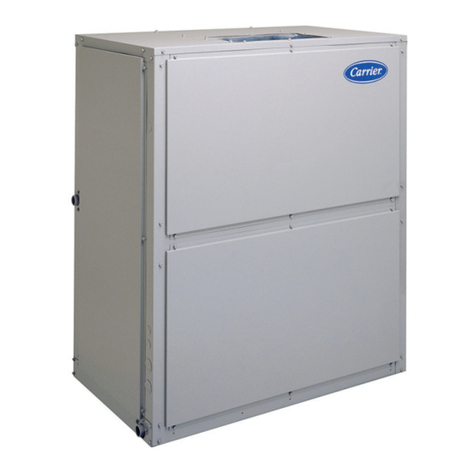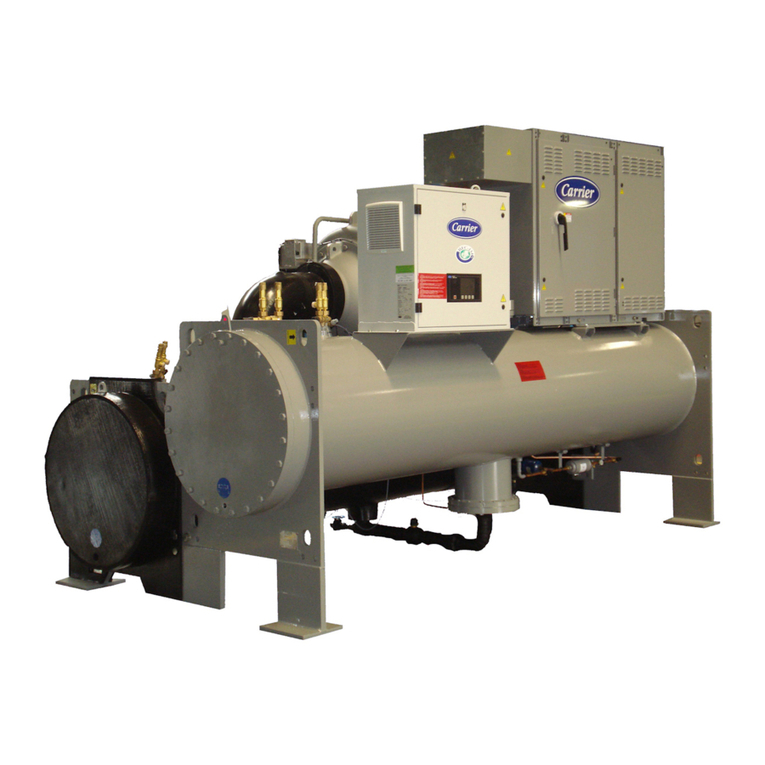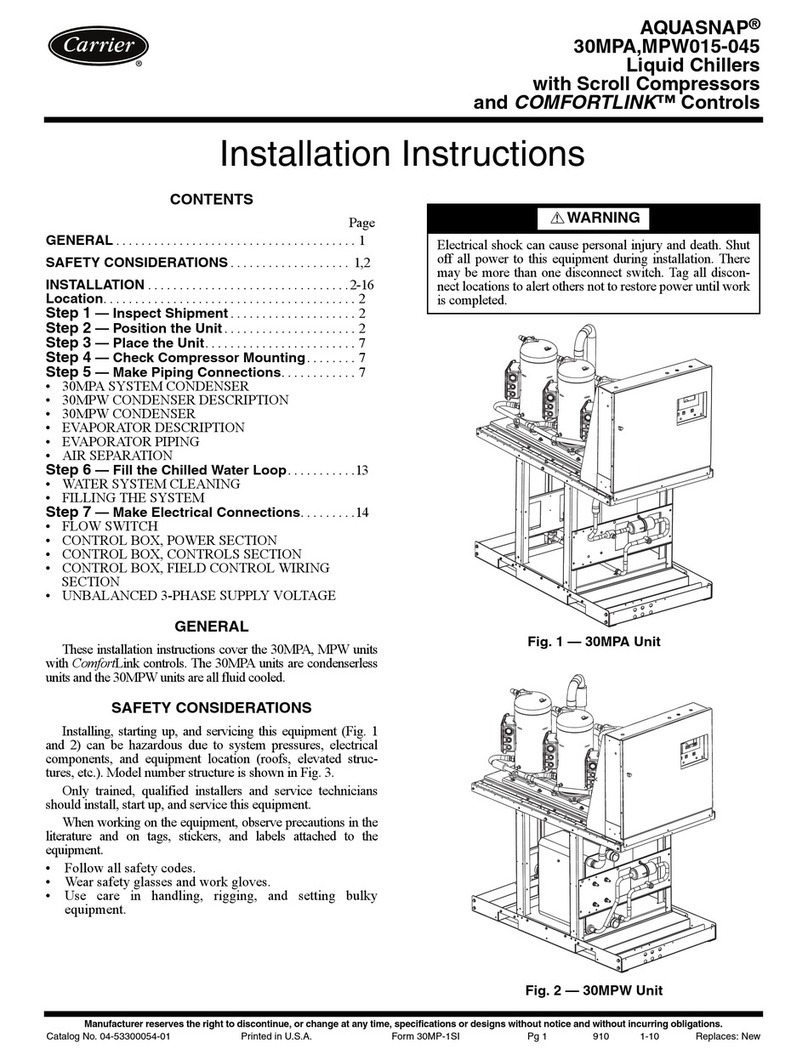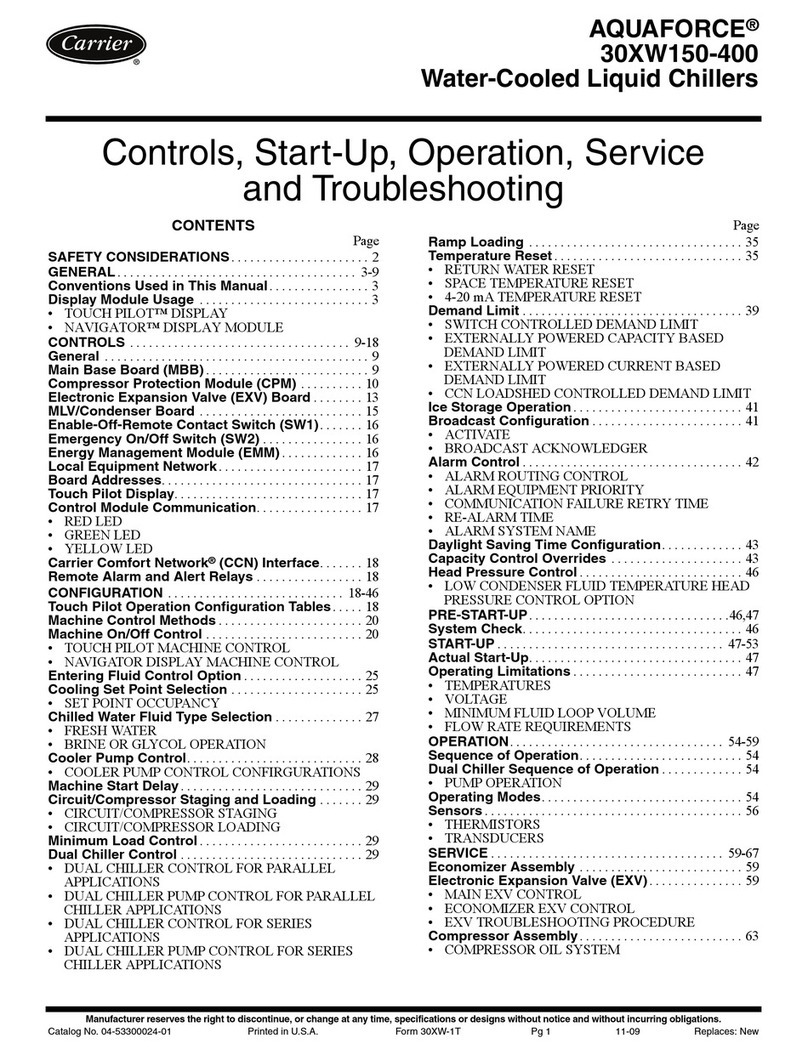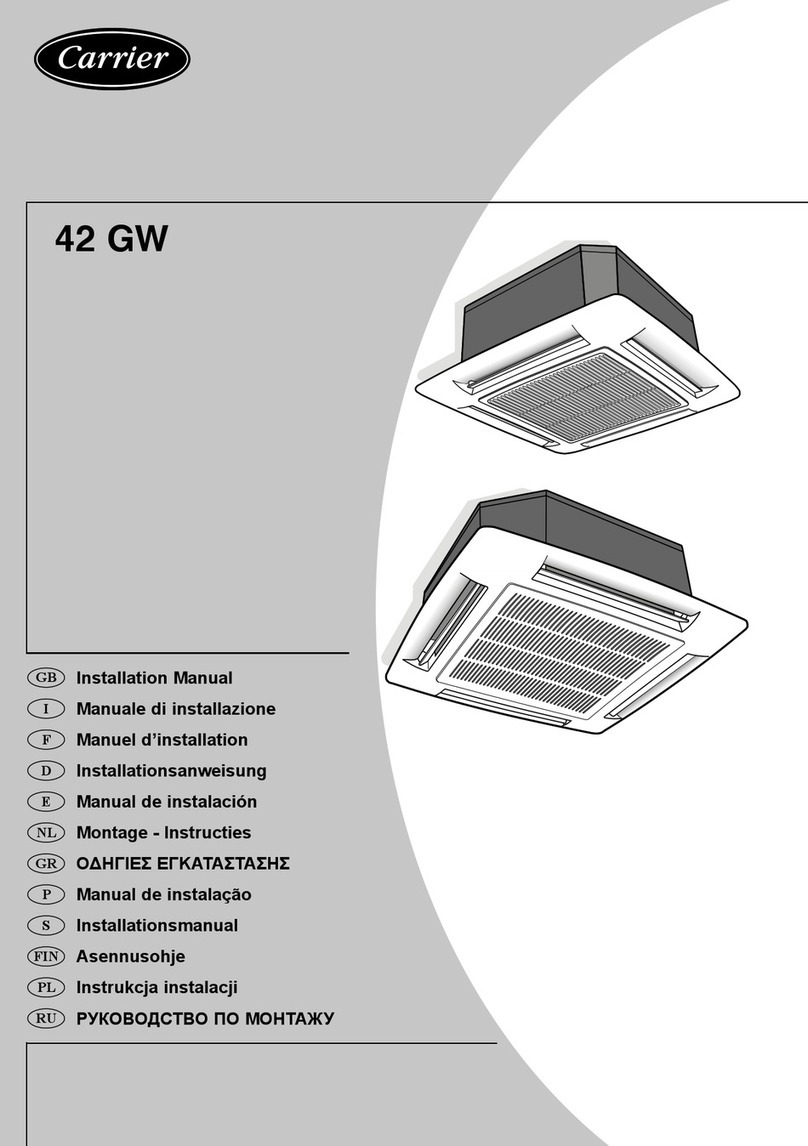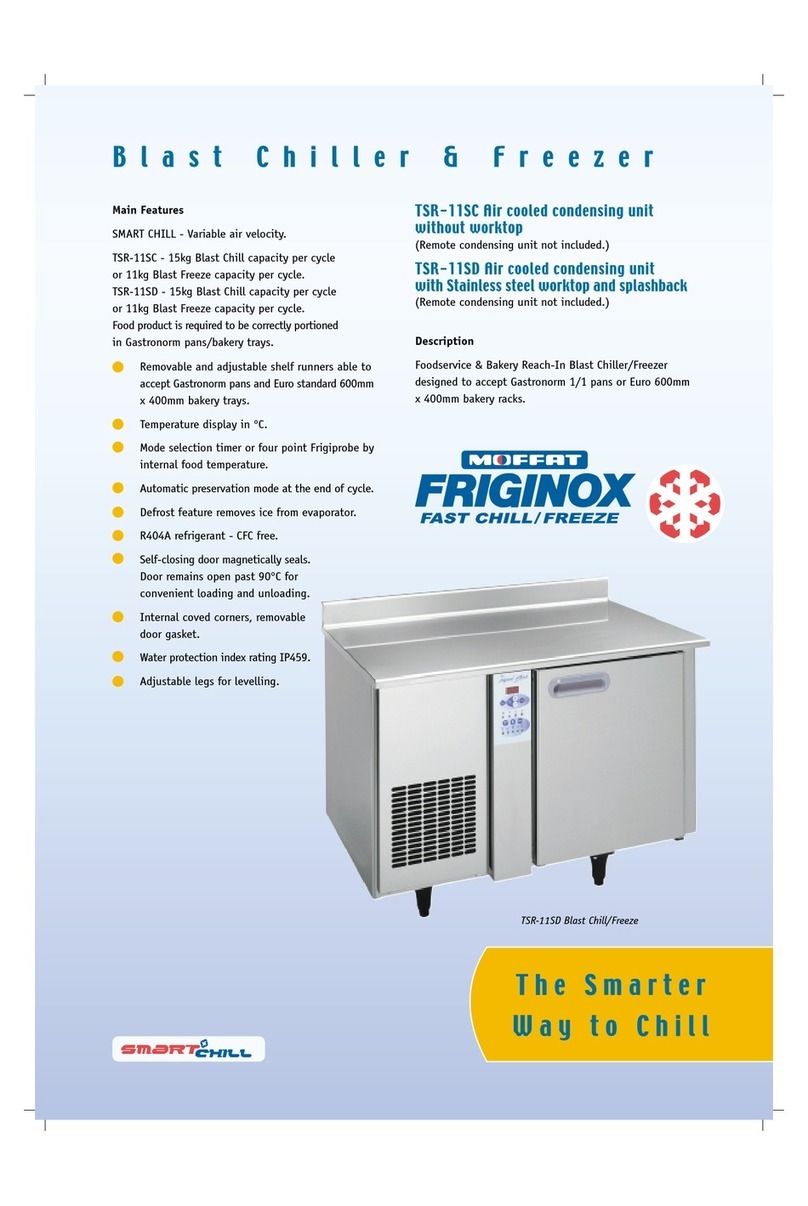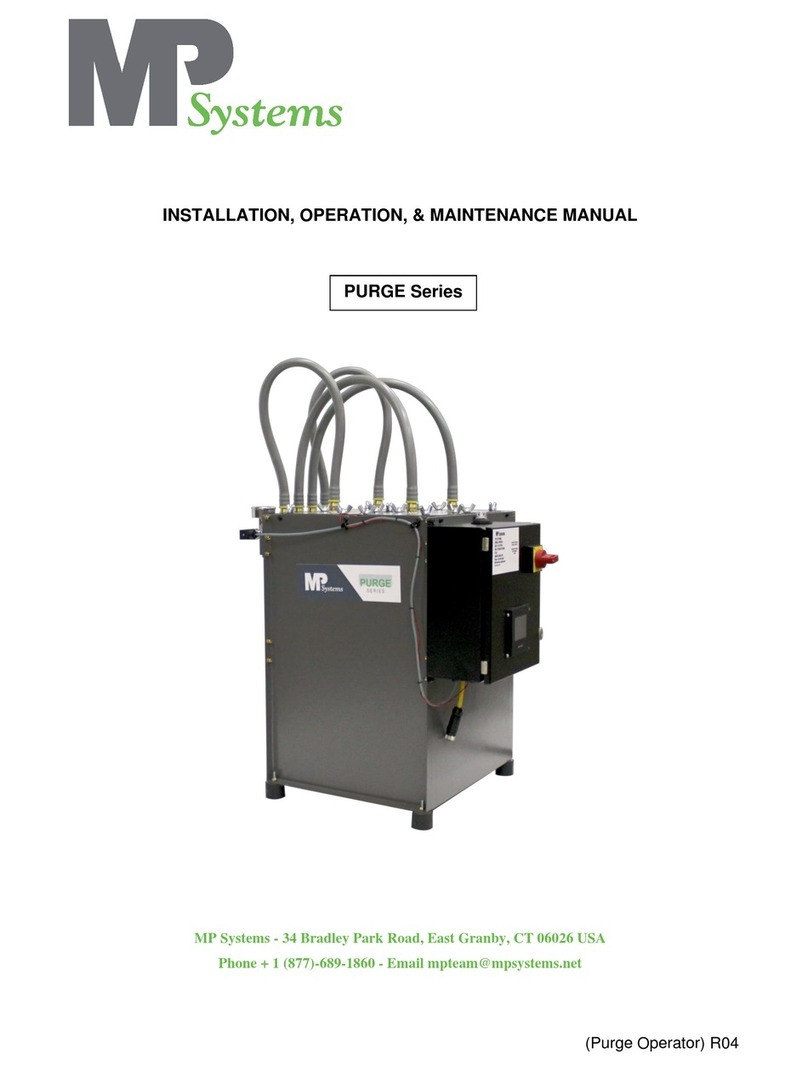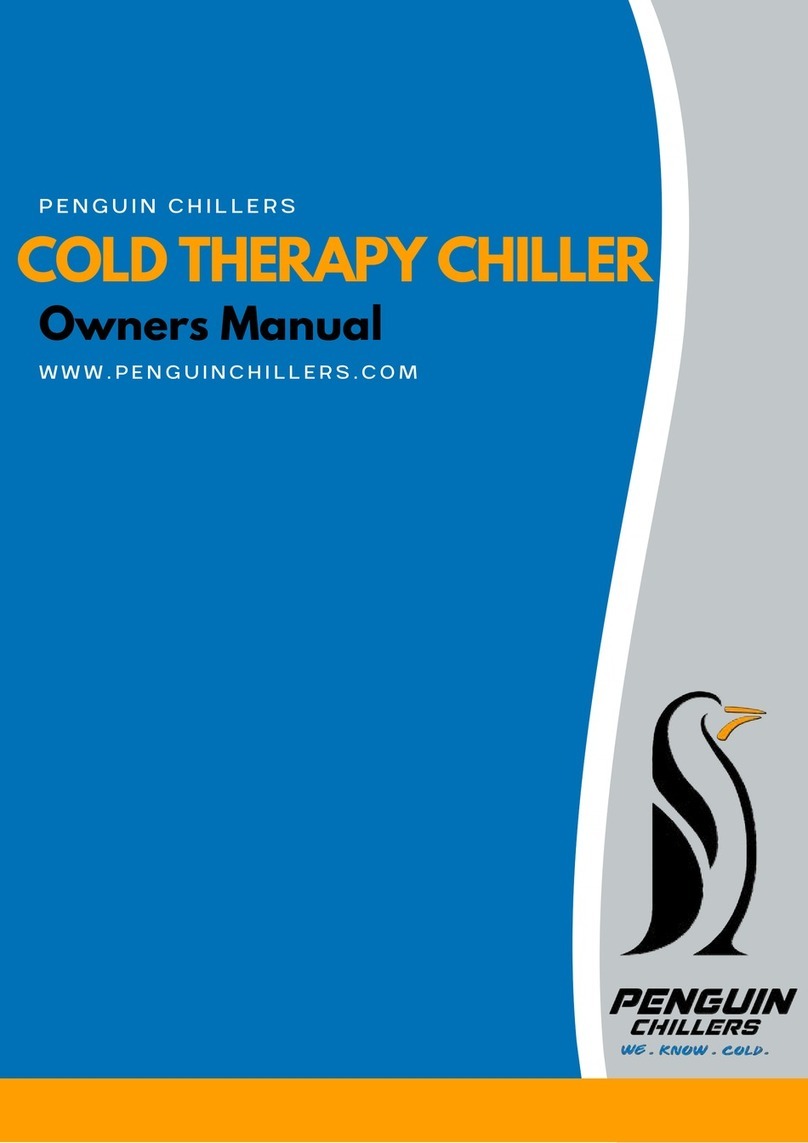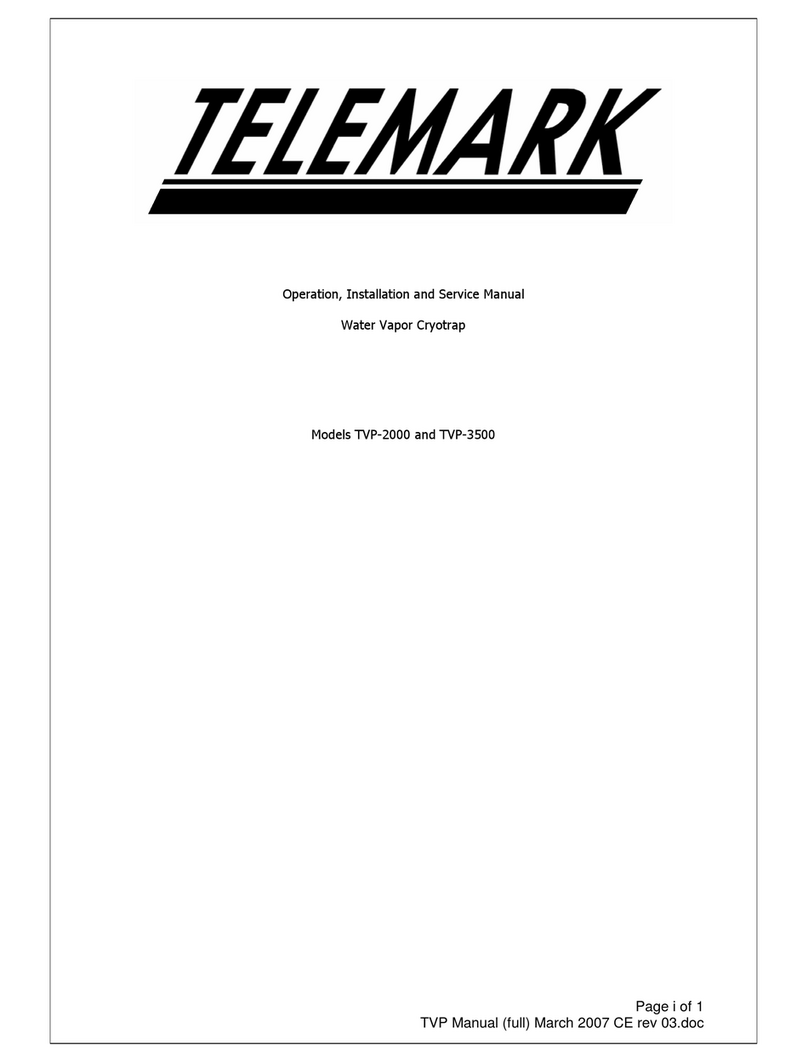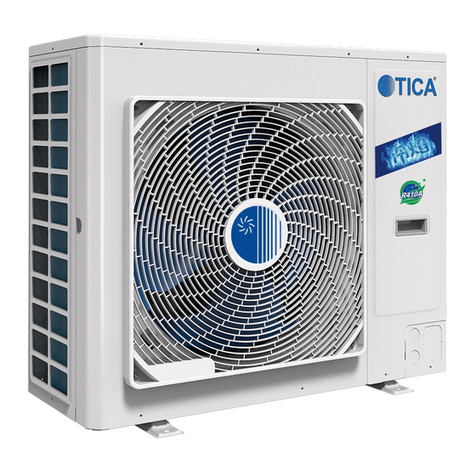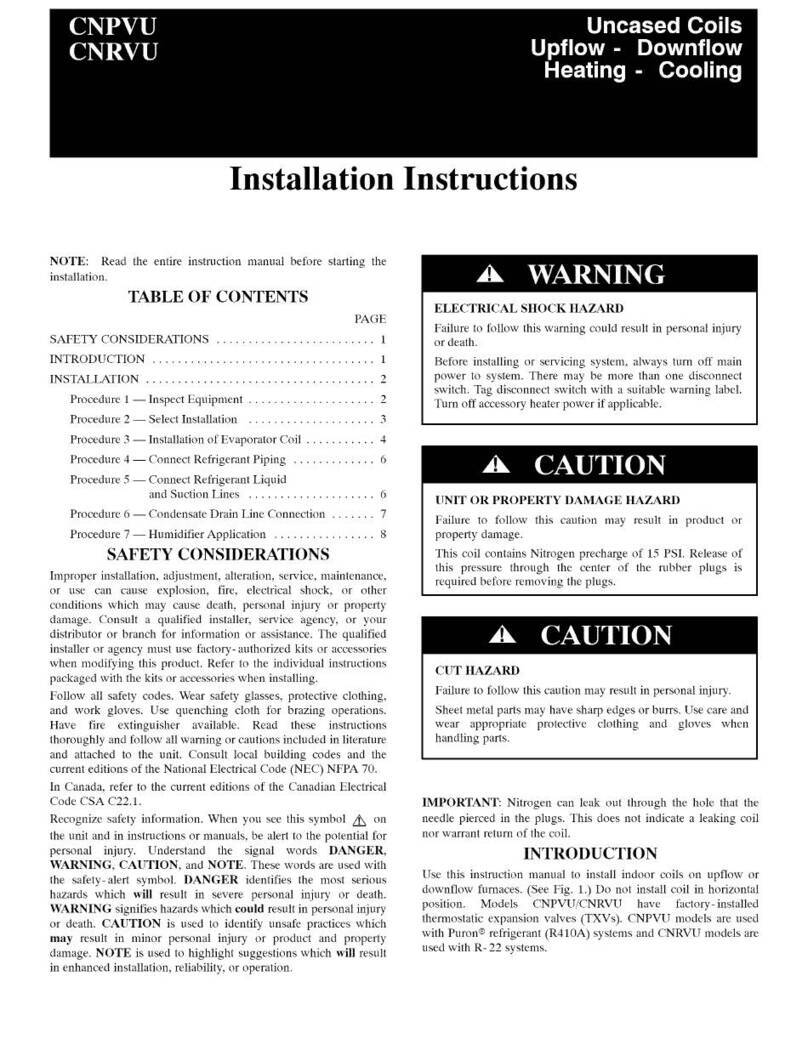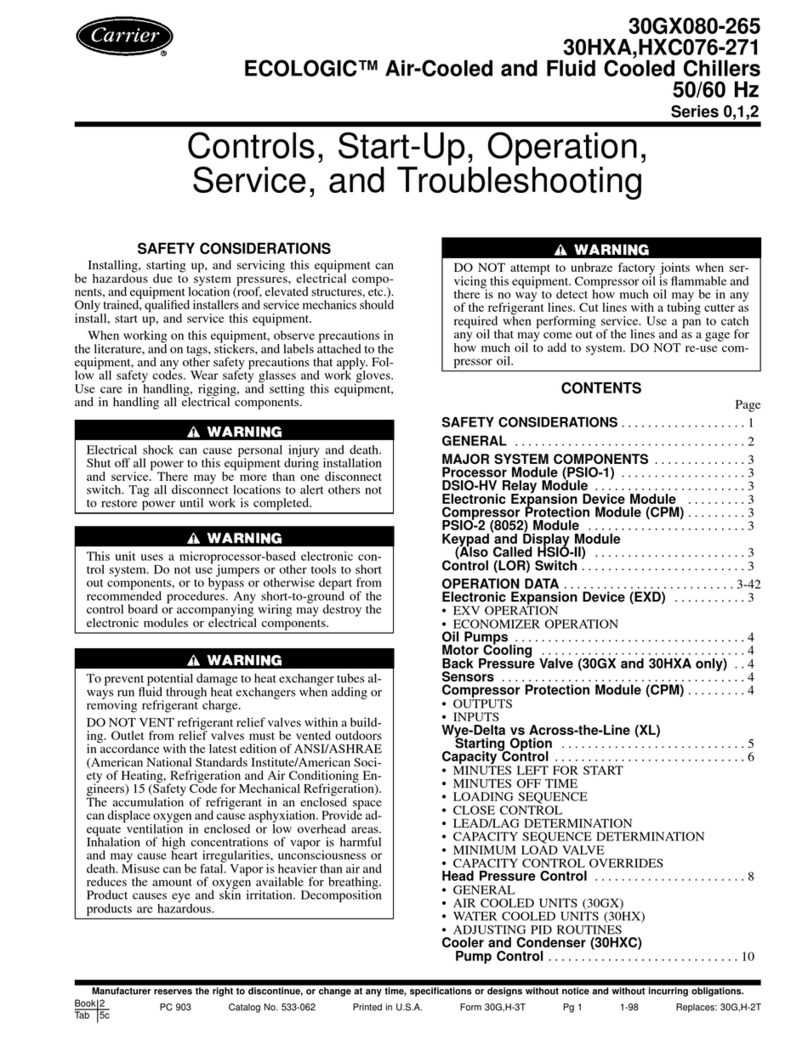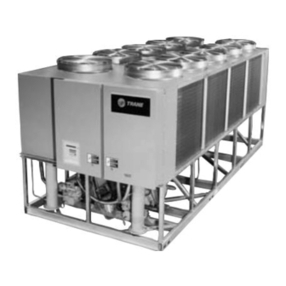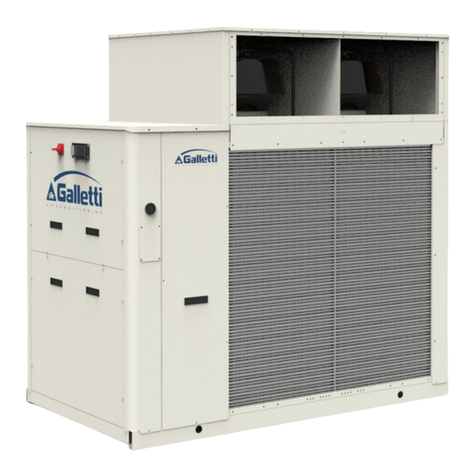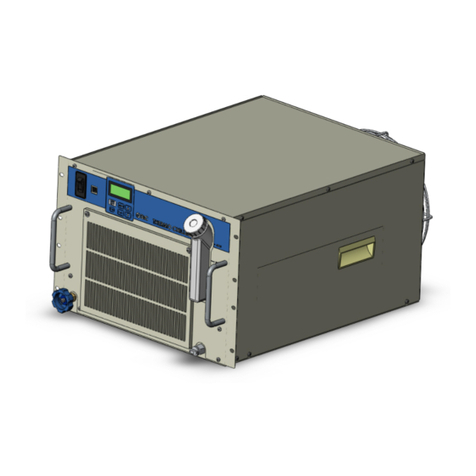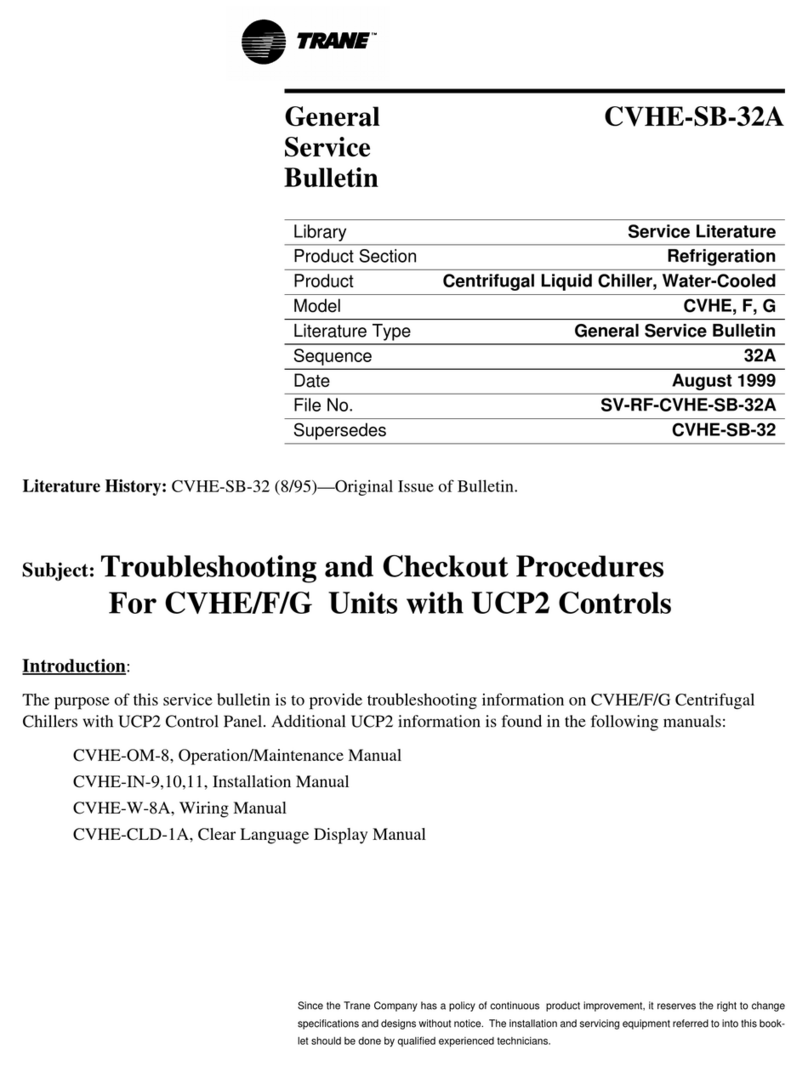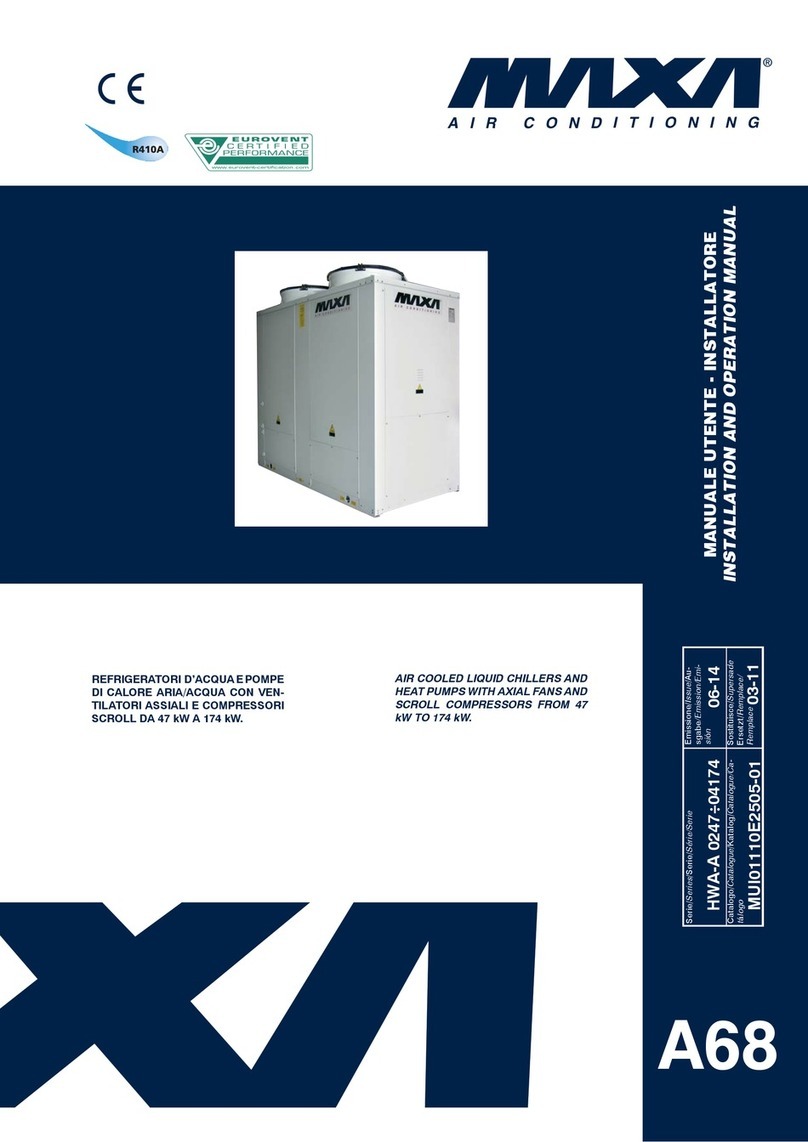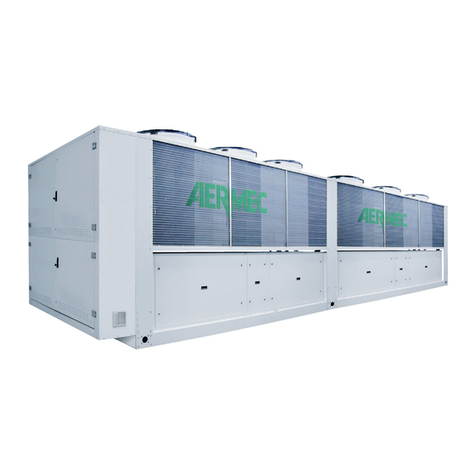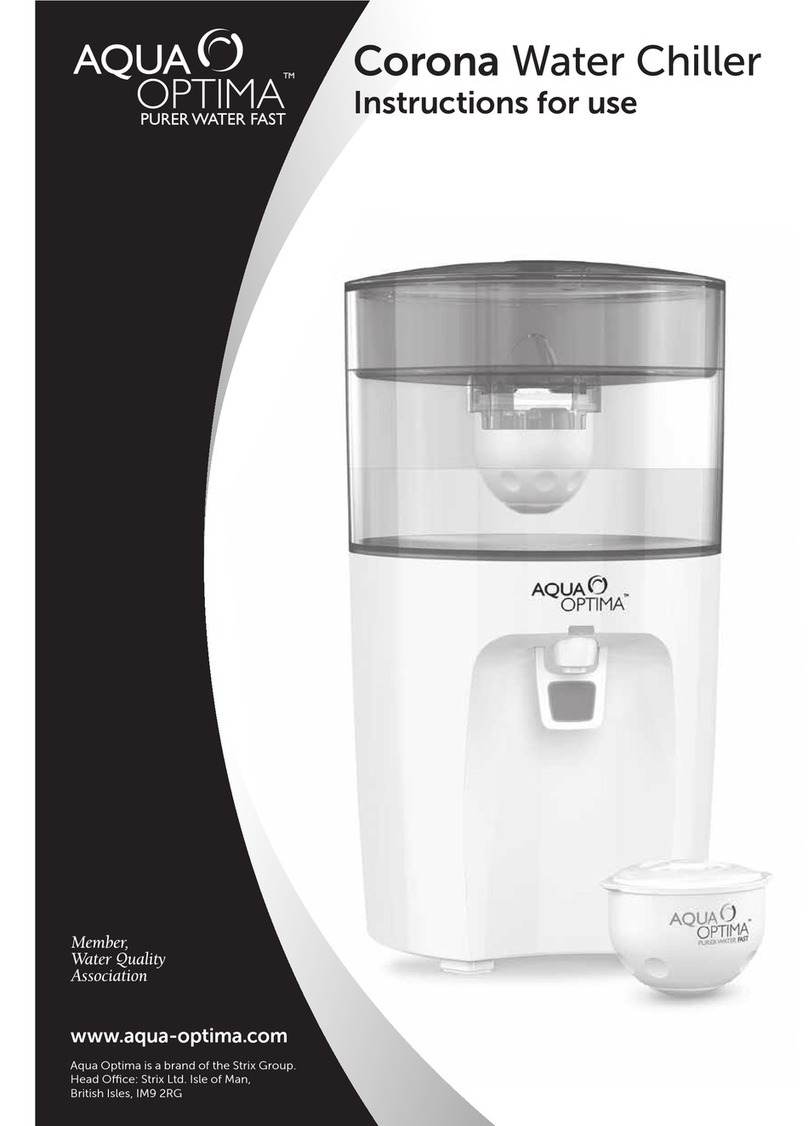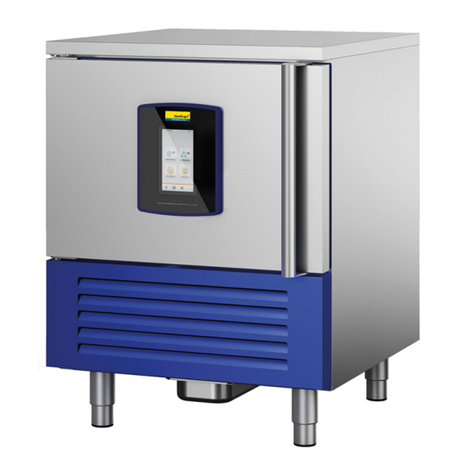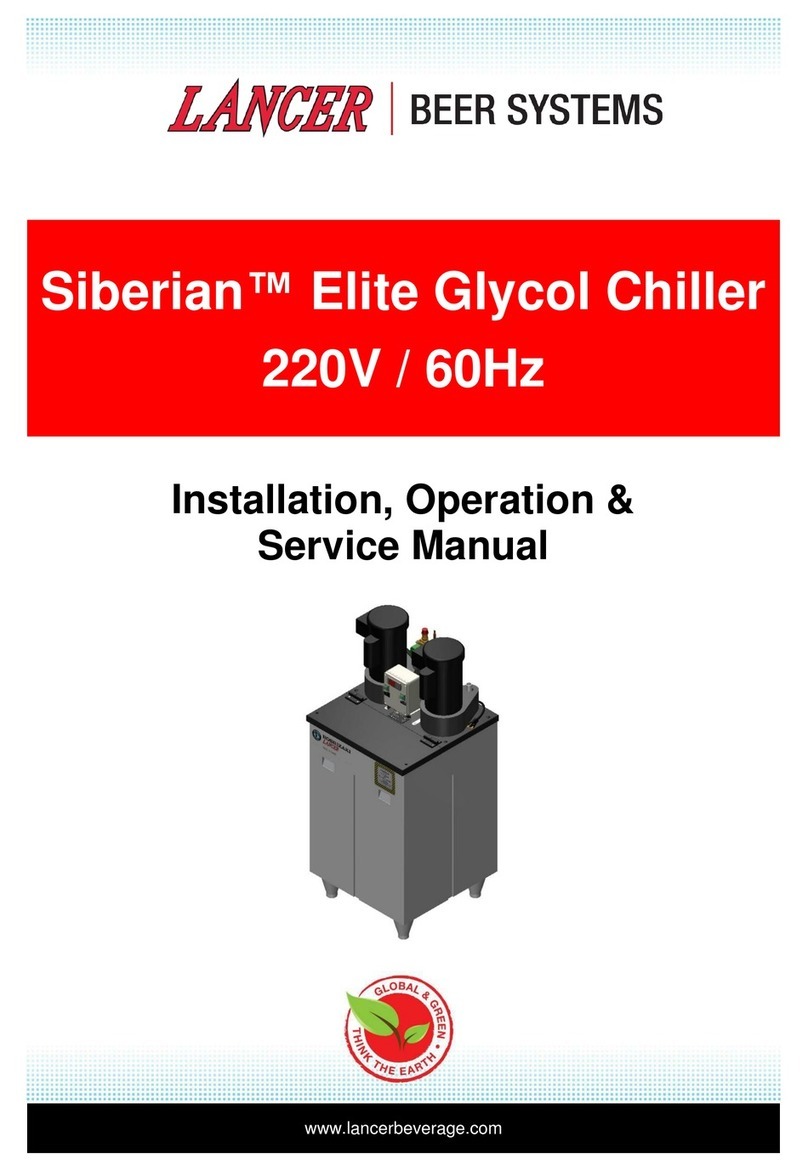CONTENTS Page
SAFETY CONSIDERATIONS ...................1
INTRODUCTION ..............................2
General ......................................2
Job Data ....................................2
RECEIVING THE CHIILLER ...................2,3
Identify Chiller ...............................2
Inspect Shipment ............................2
One-Piece Chillers: Check Shipping
Vacuum ...................................2
Two-Piece Chillers: Check Shipping
Pressure ..................................2
Provide Chiller Protection ....................2
RIGGING AND POSITIONING .................3-8
Rig One-Piece Units ..........................3
Rig Two-Piece Units ..........................3
• PREPARATION
• RIGGING
Position and Level the Equipment ............8
CHIILLER ASSEMBLY .......................8-10
Assemble Two-Piece Units ...................8
Purge Exhaust Assembly .....................8
Chiller Leak Test .............................8
Chiller Evacuation ...........................8
Connect Water Piping ........................9
Install Steam and Condensate Piping ........10
Fusible Plug Drain Piping ...................10
Rupture Disc Piping .........................10
INSULATION AND PAINT .....................11
Insulation (If Required) ......................11
• COLD SURFACES
• HOT SURFACES
Final Paint Coat (If Required) ................11
CONTROLS AND WIRING ....................11
Two-Piece Chiller Connections ...............11
Chillers With Electro-Mechanical Controls ....11
• CAPACITY CONTROL VALVE(S)
• EXTERNAL WIRING
• SENSOR ELEMENTS
Chillers With PIC Controls ...................11
• CAPACITY CONTROL VALVE(S)
• EXTERNAL WIRING
• SENSOR ELEMENTS
INITIAL SOLUTION AND REFRIGERANT
CHARGING ...............................12
INTRODUCTION
General — The 16JT chiller is factory assembled, wired,
and leak tested. Installation (not by Carrier) consists prima-
rily of establishing water, steam, and electrical services to
the chiller. Rigging, installation, insulation, field wiring, and
field piping are the responsibility of the contractor and/or
customer. Carrier has no installation responsibilities for the
equipment.
Job Data — Necessary information consists of chiller lo-
cation drawings, piping drawings, field wiring diagrams, and
a rigging guide.
RECEIVING THE CHIILLER
Identify Chiller — The chiller model number and serial
number are stamped on the chiller identification plate. Check
this information against shipping papers and job data. For
information on model number nomenclature, see Fig. 1.
The 16JT comes with either electro-mechanical controls
or Product Integrated Controls (PIC), depending on when it
was manufactured.
If the last five digits of the serial number are 80XXX (where
XXX stands for the last three digits of the serial number),
the model comes with fusible plug drain piping and rupture
disc piping; if the last five digits are 92XXX, the model comes
with rupture disc piping only.
For 16JT chillers sizes 810 to 880, the evaporator and ab-
sorber are located side by side; for sizes 080 to 150 and 080L
to 150L, the evaporator is located above the absorber.
Inspect Shipment (Fig. 2) — One-piece chillers are
at a deep vacuum when shipped. Do not open any valves
until the vacuum has been noted. Refer to One-Piece Chill-
ers: Check Shipping Vacuum below.
NOTE: Chillers shipped in 2 pieces are under nitrogen
pressure.
Inspect for shipping damage while chiller is still on ship-
ping conveyance. If chiller appears to be damaged or has
been torn loose from its anchorage, have it examined by trans-
portation inspectors before removal. Forward claim papers
directly to transportation company. Manufacturer is not re-
sponsible for any damage incurred in transit.
Check all items against shipping list. Immediately notify
the nearest Carrier Air Conditioning office if any item is
missing.
To prevent loss or damage, leave all parts in original pack-
ages until installation.
One-Piece Chillers: Check Shipping Vacuum —
To check for leaks that have occurred during shipment on
one-piece chillers:
1. Connect an absolute pressure gage to a service valve.
2. Record the absolute pressure of the assembly. If the ves-
sel pressure is greater than 0.28 in. (7 mm) of mercury,
the chiller has acquired a leak in shipping and must be
leak tested. Refer to the Chiller Leak Test section for
instructions.
Two-Piece Chillers: Check Shipping Pressure
—To check for leaks that have occurred during shipment
on two-piece chillers:
1. Connect a pressure gage (30 psig [200 kPa]) to a service
valve on each piece. Two-piece chillers are pressurized
with nitrogen to 5 psig (34 kPa).
2. If the vessel has lost its pressure, it has acquired a leak
during shipping and must be leak tested after positioning
and assembly. Refer to the Chiller Leak Test section for
instructions.
Provide Chiller Protection — If the chiller will not
be installed immediately, it is very important to use a drop
cloth or plastic cover to protect the chiller from construction
dirt and moisture before installation.Also, do not remove pro-
tective shipping cover on control panel until ready to use.
Fig. 1 — Model Number Nomenclature
2





